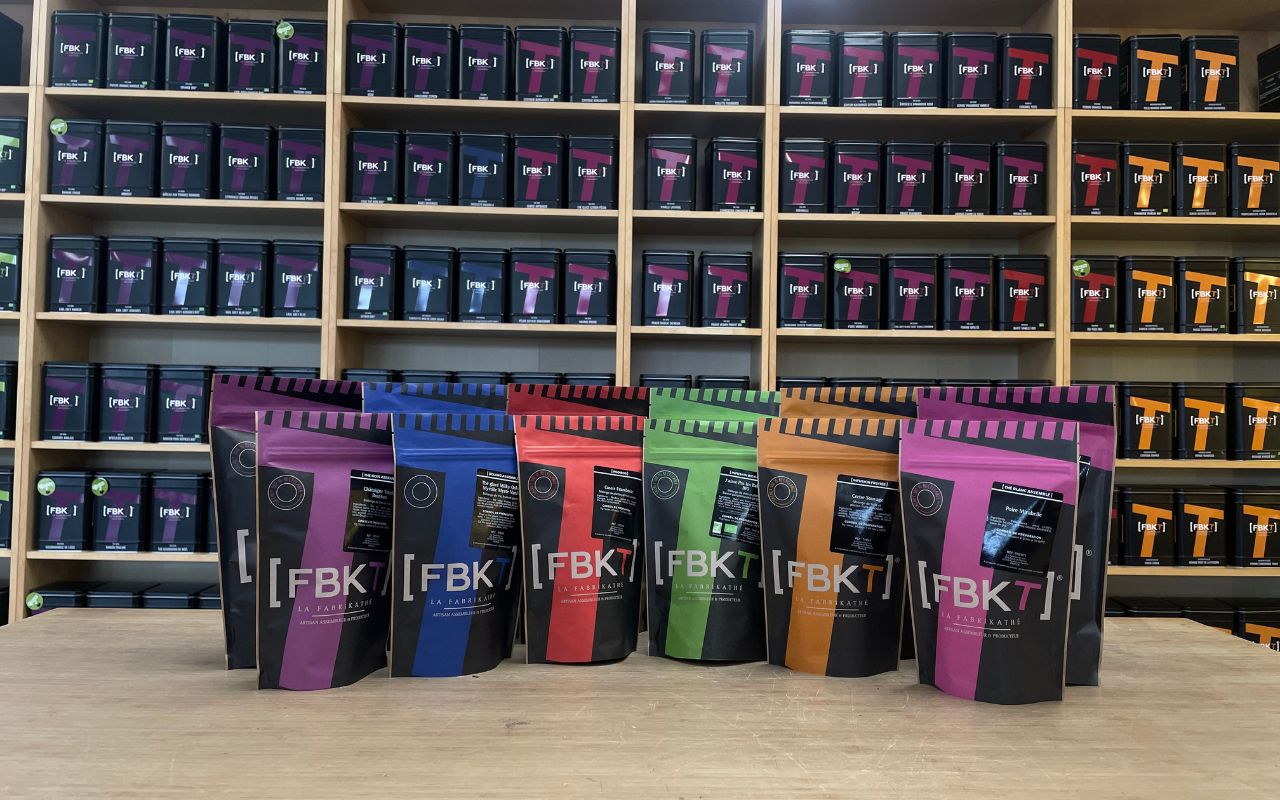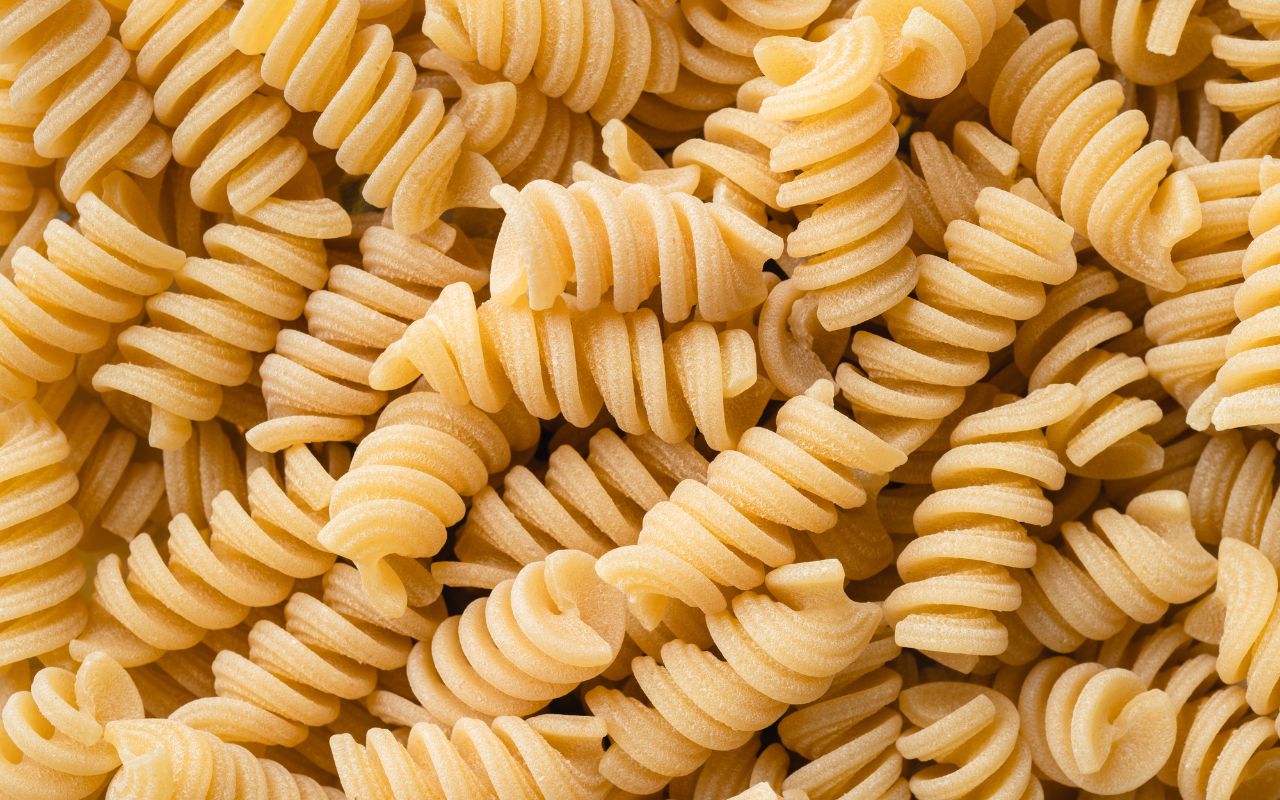A big event last week at the plantation: the arrival of swarms in our 12 brand new hives! Thanks to the help of these thousands of workers, the good pollination of our plants and our tea trees will be ensured.
Our 12 swarms (about 10,000 bees per swarm) have arrived for transfer to their new hives. The transfer was done by hand, comb by comb, with the help of a smoker to calm them down (they were, by the way, extremely calm!).
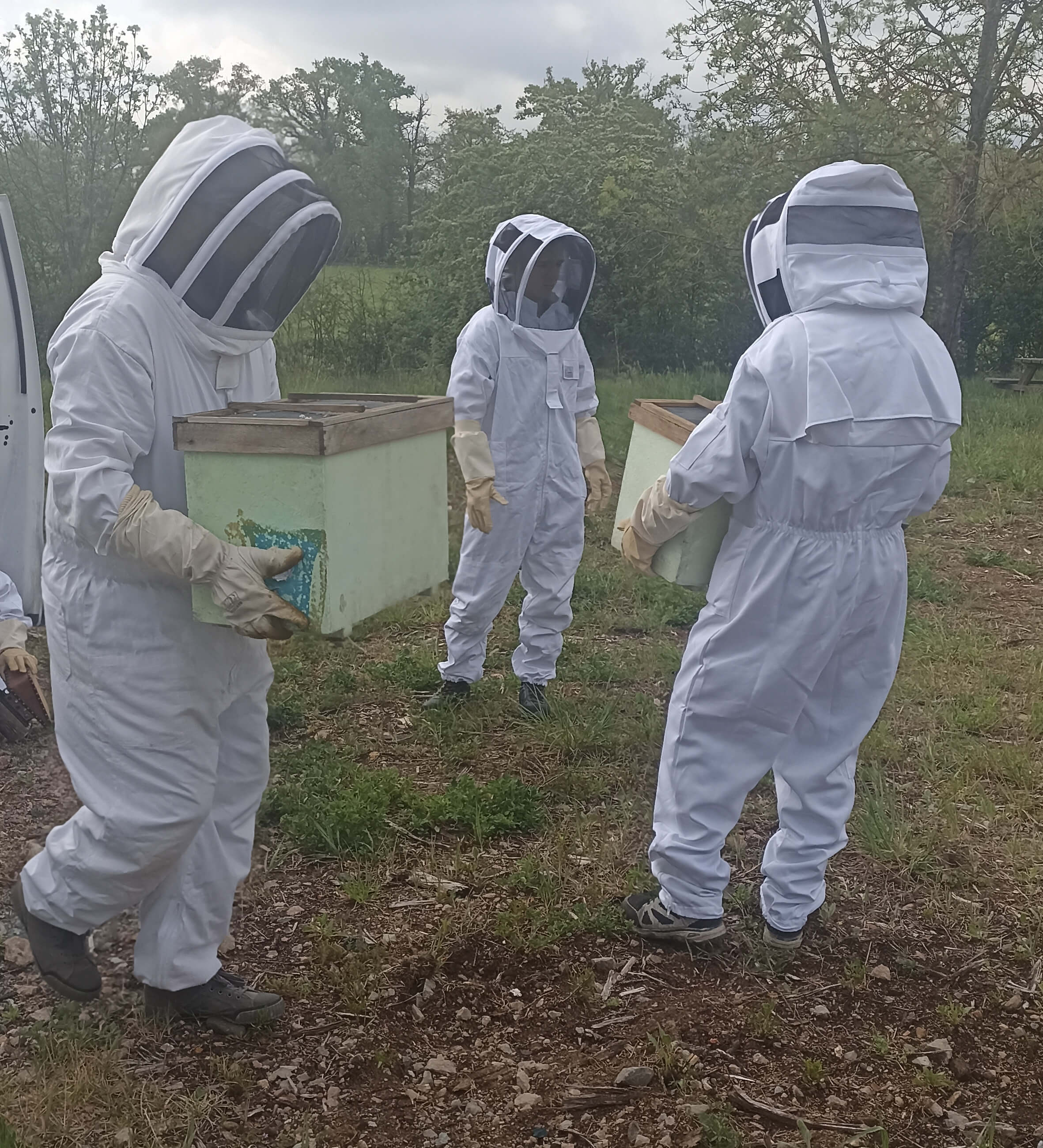
Our bees come from the south of the Rhône where the swarm has overwintered. They are bees destined to make honey from all flowers and plants throughout the seasons. Once installed, the bees made reconnaissance flights to get used to their new environment. In fact, each hive is painted with its own colour code which allows the insect to identify its home. It should be noted that the foraging radius of a bee is about 3 km.
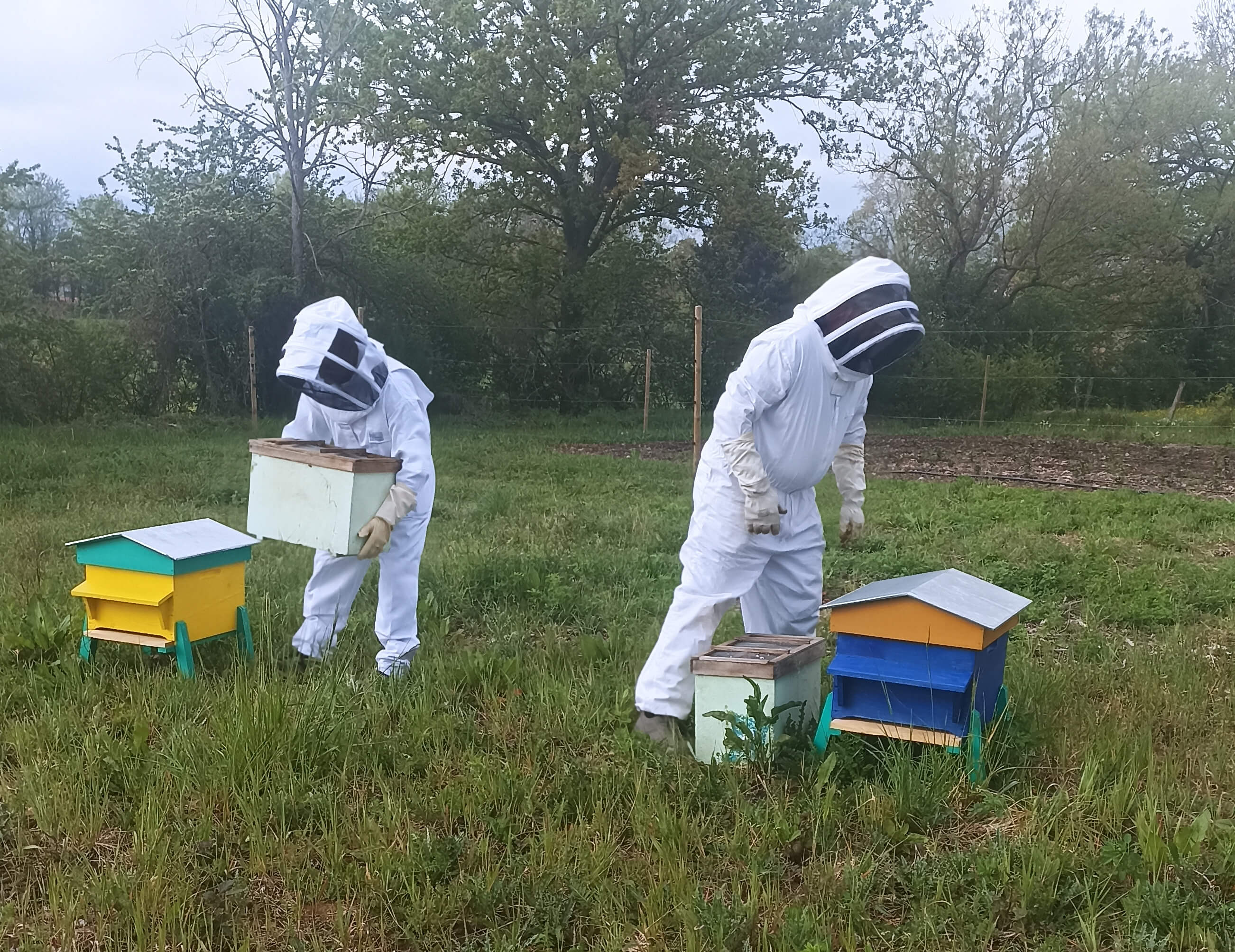
Pollination and biodiversity
Bees play a major role in the world’s biodiversity as they ensure 80% of the pollination and survival of plant species. In our plantation, they will notably contribute to the pollination of vegetables/fruits such as squash, courgettes, tomatoes… (by distributing male gametes to female flowers, for example).
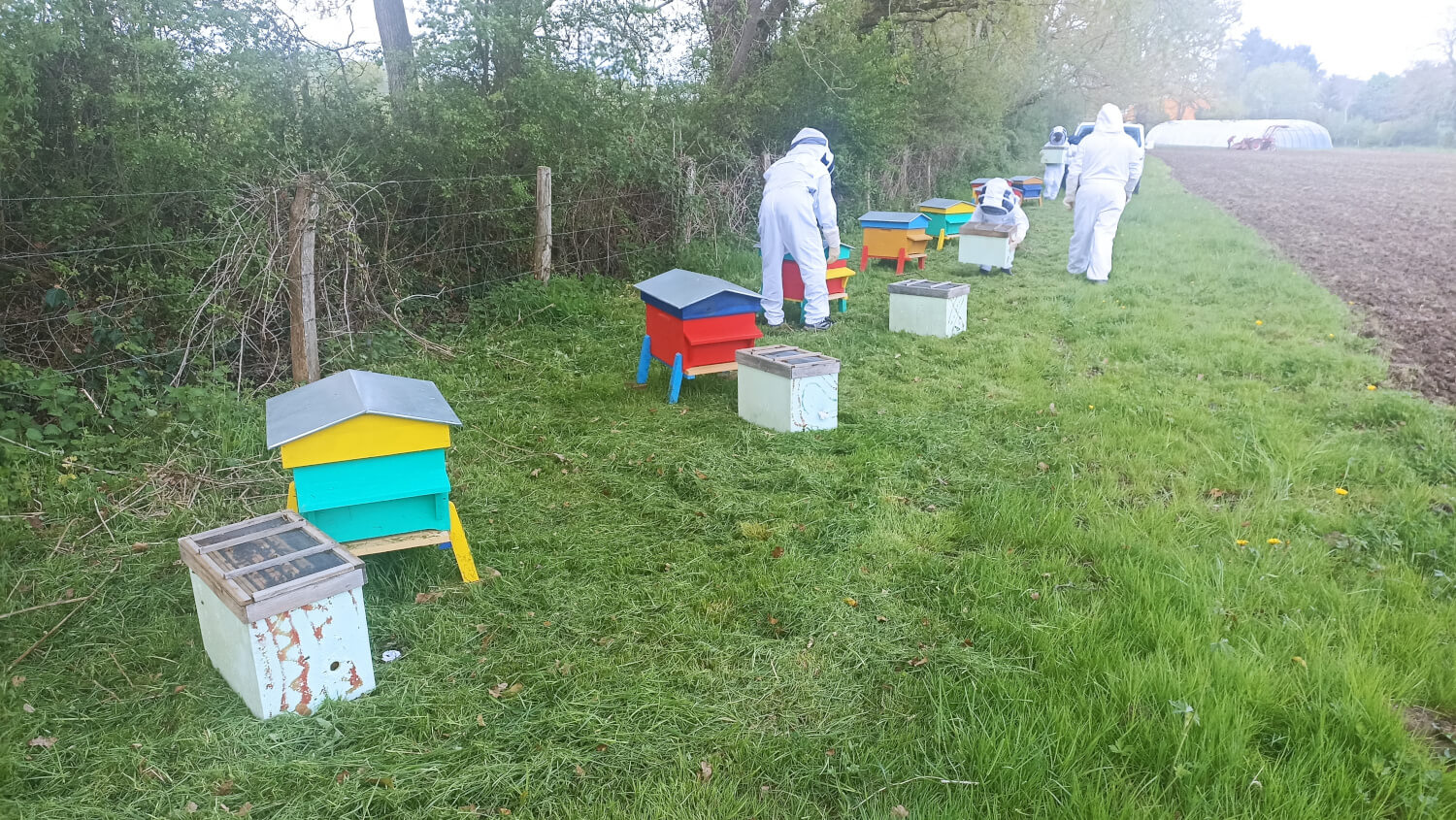
It will also have an essential mission in increasing the number of seeds for our tea plants, which is obviously essential in our breeding project (see article on tea plants).
Although the primary purpose of the apiary is to pollinate our plants, we can expect to harvest between 0 and 500 kg of honey per year.
The life of a bee
The variety in our hives is called Buckfast (or “Brother Adam”). It is a hybrid bee species, resulting from a cross between Italian bees and black bee males carried out by Brother Adam (1898-1996), at Buckfast Abbey in England. The Buckfast is appreciated by beekeepers for its many qualities: it is a hard-working variety (it is reputed to be an excellent forager), prolific (it produces a lot of honey), gentle and calm with a very low propensity to sting!
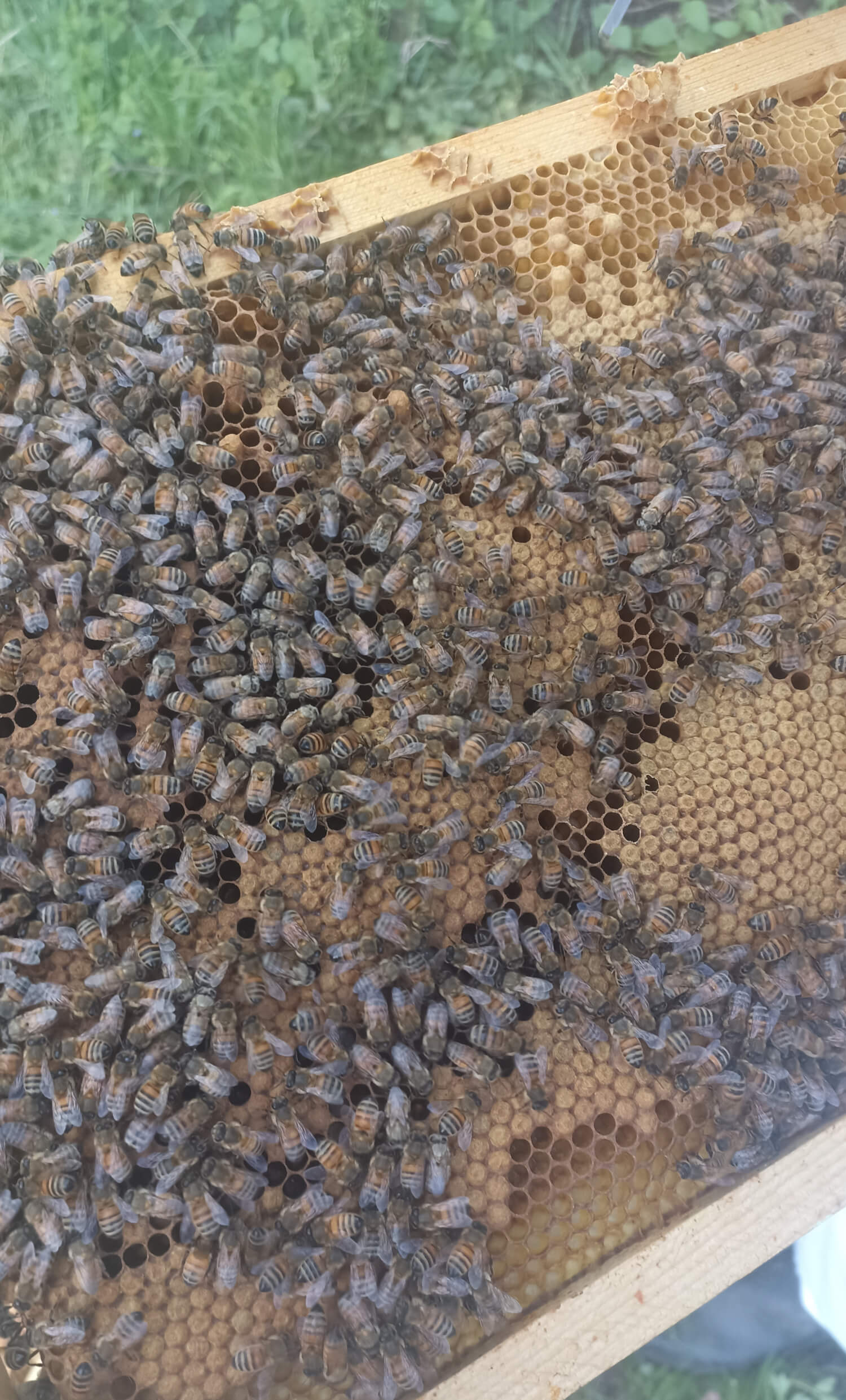
A hive contains between 30,000 and 40,000 bees at the height of the season, and every day around 2,000 bees die and are born. A worker bee lives for about thirty days and has different functions depending on her age: waxer, cleaner, sentinel… A bee only forages during the last few days of her life!
The queen bee, on the other hand, will leave the hive only once for fertilisation. She will thus be fertile throughout her life, which lasts 4 to 5 years. The queen can be easily recognised by her appearance but also by a marking made by the beekeeper (a coloured dot on her head, varying according to the year).

